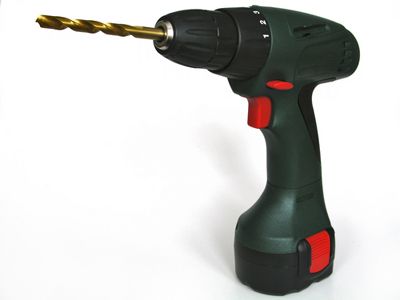Drilling a hole and drilling a pilot hole are similar processes, but they serve different purposes and involve some distinct considerations. Achieving the correct pilot hole size requires matching the drill bit to the inner diameter of the screw threads, not the outer diameter. This precision ensures the threads can bite into the material effectively, providing a strong, secure hold without exerting undue stress on the material.
Applying the correct pilot hole size to the screw diameter is a fundamental aspect of skilled craftsmanship. Let's explore how to drill a pilot hole, step by step:
1. Gather Your Materials
Before you begin, make sure you have all the necessary tools and materials. You will need a drill, a set of drill bits, a screw or fastener, a pencil or marking tool, and a tape measure or ruler.
You'll also want to make sure you have safety equipment. Always wear safety glasses when using a drill to protect your eyes from flying debris. Gloves can also offer additional protection.
2. Select the Appropriate Size Drill Bit
Choose a drill bit that matches the diameter of the inner core of your screw, not including the threads. This ensures the screw will fit snugly without splitting the material. If unsure, measure the screw’s diameter with a caliper and compare it to your drill bits.
3. Mark the Spot for the Pilot Hole
Using your pencil or marker, clearly mark the point where you want to drill the pilot hole. Make sure this spot is precisely where you want your screw to go. Use a tape measure or ruler for accurate placement if necessary.
4. Set the Drill Depth
Determine the depth of your pilot hole. It should be equal to or slightly longer than the length of the screw. Many drills come with a depth setting or a depth stop. If yours doesn't, you can wrap a piece of tape around the drill bit to ensure you reach the same depth.
5. Position the Drill
Align the drill bit with the mark you made. Hold the drill firmly and make sure it's positioned straight, at a 90-degree angle to the surface. This ensures the screw will enter straight and not at an angle.
6. Start Pre Drilling
Pre drill slowly to establish the hole. Once the hole is started, you can increase the speed. Maintain a steady pressure, but do not push too hard as this might bend the drill bit or damage the material.
7. Clean the Hole
After drilling, remove any debris from the hole and the surrounding area. This step is essential for a clean finish and to ensure the screw will fit properly.
8. Test the Screw Fit
Carefully insert the screw into the pilot hole to test the fit. It should fit snugly without resistance. If the screw is loose, the pilot hole is too big; if it doesn’t fit, the hole is too small.
9. Final Adjustments (if necessary)
If the screw doesn’t fit, you may need to create a slightly larger pilot hole using a slightly larger drill bit. Be cautious not to make the hole too large.
10. Finish Your Project
Now that the pilot hole is drilled, you can proceed with your project, knowing that your screw will fit perfectly and the material won't split.


